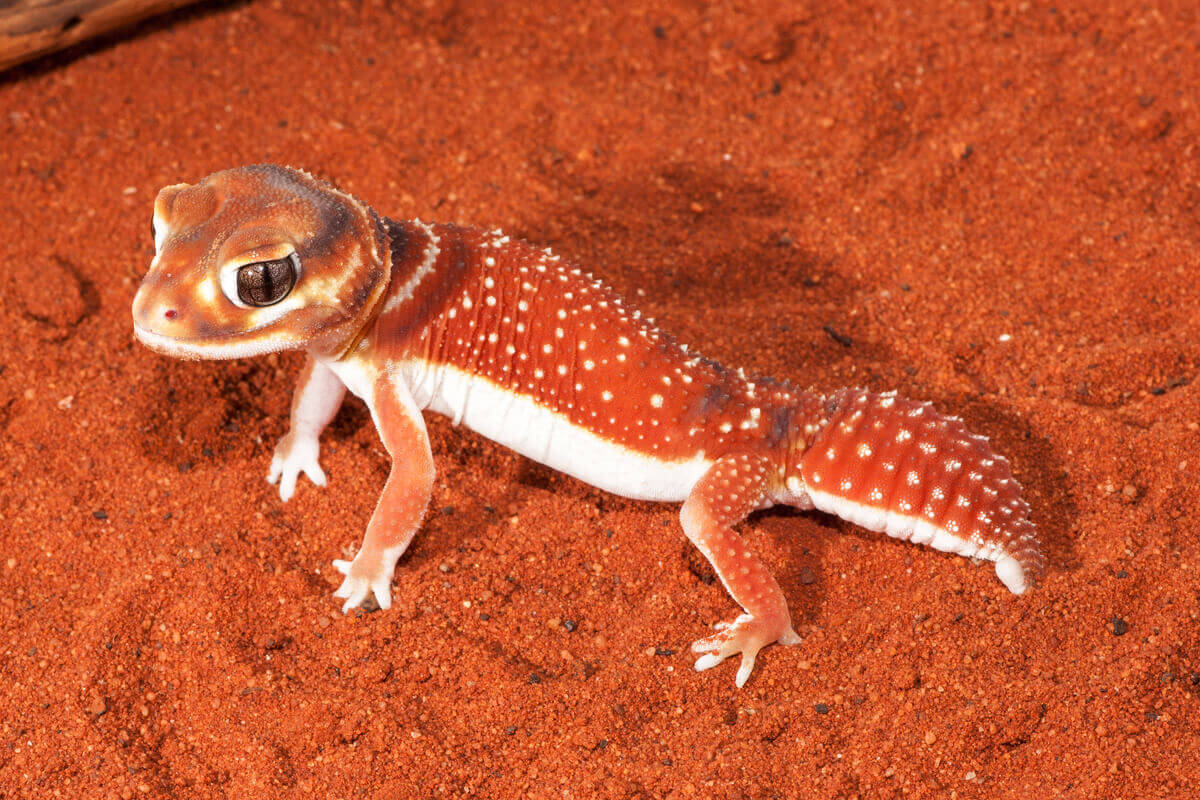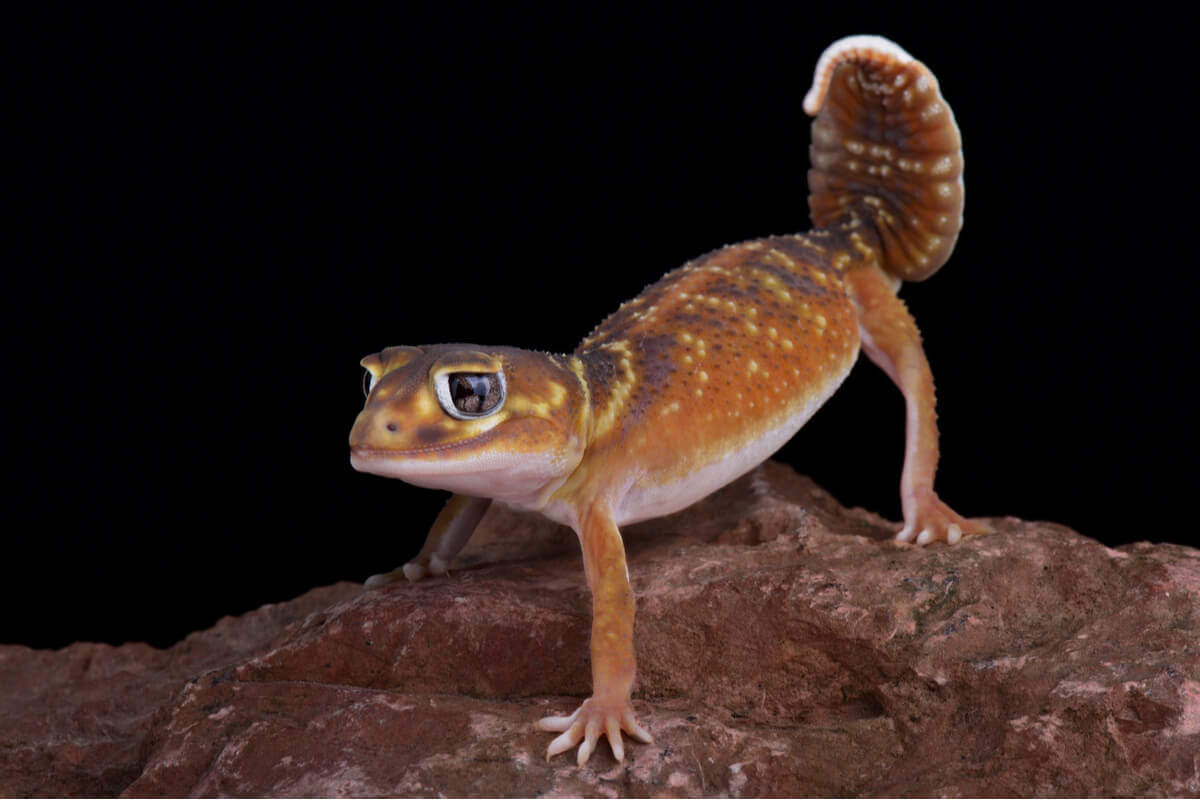Nephrurus Levis: Care in Captivity


Written and verified by the biologist Samuel Sanchez
Besides the leopard gecko, there are many exotic reptiles that are easy to maintain and that many potential pet owners don’t know about. This is the case with the Nephrurus levis, whose specimens are better known as the three-lined knob-tailed gecko, smooth knob-tailed gecko, or common knob-tailed gecko.
The Nephrurus levis is perhaps the most widespread of the Nephrurus genus on the exotic pet market. It’s a small animal, but with unusual impetus and courage. If this beautiful reptile has caught your attention, read on.
Initial considerations
First of all, it’s essential to emphasize that Nephrurus is a genus that includes 10 species recognized today. Among the most commercialized, we find the following:
- Nephrurus amyae: The largest of the genus. It’s easy to distinguish by its earthy coloration and its tiny tail.
- Nephrurus wheeleri: Small and unusually bad-tempered, this reptile stands out from the rest thanks to the black bands all over its body.
- Nephrurus levis: Darker orange in color and with less earthy patterns, it’s easy to differentiate this variety.
All these geckos are endemic to Australia, so their care will vary very little. This guide is applicable to the three species we’ve described. However, consult any interspecific variation or questions with an expert terrariologist before getting a specimen.
None of the species we’ve mentioned are included in CITES – the Convention for the Protection of Animals Threatened for Sale. Nor are their natural populations in clear decline.
Even so, you must be careful with the trade of species taken from their natural environment. All the knob tailed geckos we’ve found for sale so far are the product of breeding in captivity. But this doesn’t take away from a certain need for caution. Please ask for the relevant papers regarding captive breeding before you acquire your pet.

The care of Nephrurus levis in captivity
These species live in different environments typical of the Australian landscape, especially in arid and semi-arid regions. With this in mind, here’s the basic care of the species Nephrurus levis, also applicable to its genus partners.
Terrarium
The terrarium doesn’t have to be very large, as these geckos must live alone because of their marked territoriality. A container measuring 15x10x10 inches in width, height and length will be more than sufficient for one specimen. Even so, the more space given to the reptile, the better.
According to observations, these animals grow well in plastic enclosures, but here we encourage tutors to buy a glass terrarium specially designed for reptiles. These have efficient ventilation systems and, in addition, the animal will look much better in any display case in this type of enclosure.
As far as the substrate is concerned, you should use compact sand. We always recommend using calcium sand (CaCO3), as the animal may accidentally ingest it and metabolize it without any problems. This will prevent the dreaded gastrointestinal impaction disorders that many desert reptiles suffer from.
Otherwise, the terrarium should have two shelters, one in the warm zone and one in the cold zone. You can also place some large stones or hollow trunks inside as environmental enrichment. Also, include a small receptacle with water for the reptile to drink when necessary.
Environmental requirements
Here is a quick overview of the climatic conditions necessary for keeping this species healthy and happy. Here we go:
- Temperature: There must be a thermal gradient in the terrarium. To achieve this, you should place a thermal blanket behind the glass and underneath the terrarium. The warm side should always be at about 30-31 °C and the cold side at least 23 °C.
- Humidity: This is a desert animal, so you need to avoid high humidity in the terrarium. A small bowl of water for the animal to drink is more than sufficient, and you should spray the cold area with water a couple of times a week.
- Lighting: This species doesn’t require special spotlights, but it does require a period of natural light.
Feeding your Nephrurus levis
Nephrurus are exclusively insectivorous, so their diet will consist mainly of crickets, cockroaches, and worms. An adult eats about four times a week, and you should sprinkle the prey with calcium and vitamin D before at least one of these sessions. This will allow the animal to grow strong and healthy.
Note that these geckos hunt only by visual stimuli, which is why all the prey you offer must be alive and active. If the insect is not in good shape or doesn’t move much, the animal will easily lose interest.

All cited sources were thoroughly reviewed by our team to ensure their quality, reliability, currency, and validity. The bibliography of this article was considered reliable and of academic or scientific accuracy.
- REVIEW OF NON-CITES REPTILES THAT ARE KNOWN OR LIKELY TO BE IN INTERNATIONAL TRADE, ec.europa.eu. Recogido a 17 de noviembre en https://ec.europa.eu/environment/cites/pdf/reports/non_cites_reptiles.pdf
- Knob tailed gecko, reptilesmagazine.com. Recogido a 17 de noviembre en https://www.reptilesmagazine.com/knob-tailed-gecko-care-sheet/
This text is provided for informational purposes only and does not replace consultation with a professional. If in doubt, consult your specialist.